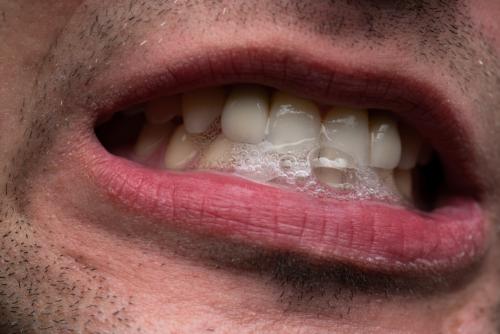Syphilis, multifaceted disease.

Syphilis is a sexually transmitted disease that, when untreated, leads to severe complications. The condition is caused by Treponema pallidum - a spiral-shaped bacterium - Gram-negative, extremely mobile. Syphilis is transmitted through unprotected, vaginal, oral or anal sexual contact through blood transfusions or from mother to fetus. Syphilis has several stages: primary, secondary, latent and tertiary. Each stage is associated with different symptoms and signs. I learned from gynecologist Erna Stoian and dermatologist Proca Ancuta who is the historian of the disease, how it evolves and what are the ways of transmission.
Primary stage of syphilis The incubation period of the infection, from the time of infection to the first symptoms, is between 3 and 90 days and the average period is 21 days. In the first stage of the disease, an ulceration at the infection entry site can be observed. It is round, painless, with a diameter between 3 mm and 3 cm. The most common location in women is in the cervix and in the penis male heretosexual. Not being painful, ulceration may go unnoticed.
It has a limited evolution and heals in 3-6 weeks, whether the disease is treated or not. Even if ulceration has healed, treatment is necessary. Secondary stage Secondary stage manifestations consist of rash and mucosal ulceration. Usually they are mouth, vaginal or anal. Skin eruption occurs either during primary ulcer healing or a few weeks after.
Generally, it can be identified after those red spots or browns on the palms or feet, without pruritus. There may be other symptoms, such as fever, inflammation of the lymph nodes, sore throat, hair loss, headache, weight loss, muscle weakness and fatigue. These symptoms in the secondary stage disappear without treatment, but the infection progresses to the latent or even tertiary stage. Secondary syphilis may take 2-3 years without treatment. Latent stage begins with the disappearance of primary and secondary symptoms.
In the absence of treatment, the infected person will continue to have syphilis in the body, even decades, but without any symptoms. Tertiary stage Tertiary syphilis may occur 10-30 years after initial infection, destroying many organs, such as the heart, the brain, but also the nervous system, and leading to death. Tertiary syphilis is no longer infectious and has three forms: gothic syphilis, tardive neurosis and cardiovascular syphilis. Gumphal syphilis is manifested by the formation of gomes that look like soft, tumour-shaped swelling. These usually affect the skin, bones and liver, but can occur anywhere.
Neurosyphilis is an infection that affects the central nervous system, it may be asymptomatic or may occur as a syphilis meningitis, or in the form of meningesis syphilis, general paresis. It is associated with equilibrium problems and protruding pains in the extremities. Cardiovascular syphilis is most common with syphilis aorta, which can lead to aneurysm. Neurosyphilis or Untreated Syphilis, syphilis can spread to the brain and central nervous system or eye. This can happen at any stage of the disease.
Symptoms of neurosyphilis include: Severe headache Paralysis Difficulty of coordination Numbness Dementia Symptoms of eye syphilis include decreased visual acuity and even blindness. Congenital syphilis If you are pregnant and have syphilis, you can transmit the infection to the fetus. Infections with syphilis in pregnancy may lead to premature birth, the baby may have a low weight or may be born dead. Testing for syphilis is mandatory in pregnancy. If the test is positive, you should start treatment immediately.
An infected newborn may have no symptoms or may have oral and cutaneous injuries. If not treated, problems will occur after a few weeks. Symptoms of congenital syphilis: leakage of secretions from the nasal cavity contagious eruption occurs frequently at the level of the palms anemia pneumonia enlargement of the liver and spleen inflammation of the lymph nodes retarded growth and development How is transmitted Syphilis is transmitted from one infected partner to another through vaginal contact, . The infection can also be transmitted from the mother to the fetus. If you have syphilis and are not treated, you can transmit the infection even if you have no symptoms.
How to Reduce the Risk of Syphilis The only method of preventing sexually transmitted diseases is abstinence. If you have sexual activity, to reduce the risk is good: Have a monogamous relationship with a tested partner who is not infected. To use a condom at every sexual intercourse. Condom use prevents transmission after contact with ulceration. However, ulceration can be in uncovered areas of the condom, so the infection can be transmitted.
Diagnosis is done with blood tests. It can also be tested by ulceration fluids. Treatment of syphilis If not treated in time, syphilis can lead to serious complications, even to death. Antibiotic treatment is effective in most stages but is not effective in case of complications. After the treatment, the tests should be repeated to confirm its success and removal of the infection.
All sexual partners of an infected person should be tested and treated in turn. If you have been treated and you have healed, you must know that you are not protected in the future too, so you can get sick at any time from an infected partner. Treatment should be followed exactly as prescribed by your doctor, and repeated tests are essential. .
Source : csid.ro
Views : 3729
Popular Article
- (photo) Nude becomes art.
Posted: 2018-03-17, 9810 views.
- The harmful effects of air conditioning on the skin
Posted: 2017-06-08, 8519 views.
- 3 causes of dyed hair discoloration
Posted: 2017-06-15, 8403 views.
- Why early puberty occurs in girls: symptoms, favors, diagnosis and treatment
Posted: 2017-10-24, 8244 views.
- Good or bad skin treatments in the hot season
Posted: 2017-06-07, 7975 views.
Recommendations
- (photo) Nude becomes art.
Posted: 2018-03-17, 9810 views.
- The harmful effects of air conditioning on the skin
Posted: 2017-06-08, 8519 views.
- 3 causes of dyed hair discoloration
Posted: 2017-06-15, 8403 views.
- Good or bad skin treatments in the hot season
Posted: 2017-06-07, 7975 views.
- Risks of practicing sports on hot days
Posted: 2017-06-12, 7549 views.
 4 effective ingredients in the fight against acne.
4 effective ingredients in the fight against acne. How to get rid of hiccups fast
How to get rid of hiccups fast The wheat bran diet: the secret of lost pounds as if by magic
The wheat bran diet: the secret of lost pounds as if by magic The recipe that will sweeten your soul this weekend!
The recipe that will sweeten your soul this weekend!  Is it dangerous or not to refreeze meat after thawing it?
Is it dangerous or not to refreeze meat after thawing it?  The unusual sign of diabetes indicated by saliva.
The unusual sign of diabetes indicated by saliva. What to drink to boost your immune system.
What to drink to boost your immune system. 10 foods that help you never age.
10 foods that help you never age. What actually happens in your body if you drink a cup of coffee for breakfast
What actually happens in your body if you drink a cup of coffee for breakfast 5 surprising benefits of chia seeds
5 surprising benefits of chia seeds